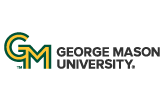
 | University Libraries
| University Libraries
You will need to be able to discern whether a source is scholarly, trade, or popular. This handy tutorial will help you make those determinations. It may be downloaded as a PDF for quick and easy access.
Beyond identifying the type of source, you will need to evaluate information for its suitability to your research. Evaluating information and reading sources with a critical eye is an important part of your research. Below are two methods for evaluating information.
CRAAP* is an acronym for remembering criteria to use when evaluating information.
|
C |
Currency |
When was the information published or last updated? |
|
R |
Relevance |
Does the information answer your research questions appropriately? How does it help you? Who is the intended audience? |
|
A |
Authority |
Who are the authors and what are their credentials? |
|
A |
Accuracy |
Was the piece reviewed by editors or scholars? Is there supporting evidence? Can you verify the accuracy of the information? Is there a bibliography or list of cited sources? |
|
P |
Purpose |
Is the author’s purpose to sell, persuade, entertain, or inform? Is the information or author biased? Do the authors make their intentions clear? |
*CRAAP acronym and descriptions created by the Meriam Library at CSU, Chico. (http://www.csuchico.edu/lins/handouts/evalsites.html)
Evaluating information is as easy as A, B, C, D, E.
|
A |
Author |
Who is the author/publisher/source/sponsor? What are the author's credentials? |
|
B |
Bias |
What is the purpose of the information source? Is the information biased? Is it fact, opinion, or propaganda? Does the point of view appear objective or impartial? Do the authors make their intentions clear? |
|
C |
Content |
How truthful and reliable is the information? Is the content presented clearly, concisely, and cogently? Does it follow established standards of scholarly communication or journalism? Is the information well-written and professionally presented? |
|
D |
Date |
When was this information published? How current is the information? How important is currency to your field of study? |
|
E |
Evidence |
Are the claims made in the information source supported by evidence? Is the evidence presented sufficient to make the author's/creator's argument? What evidence might have been overlooked? Are there citations for the sources noted? |
Ask a Librarian | Hours & Directions | Mason Libraries Home
Copyright © George Mason University